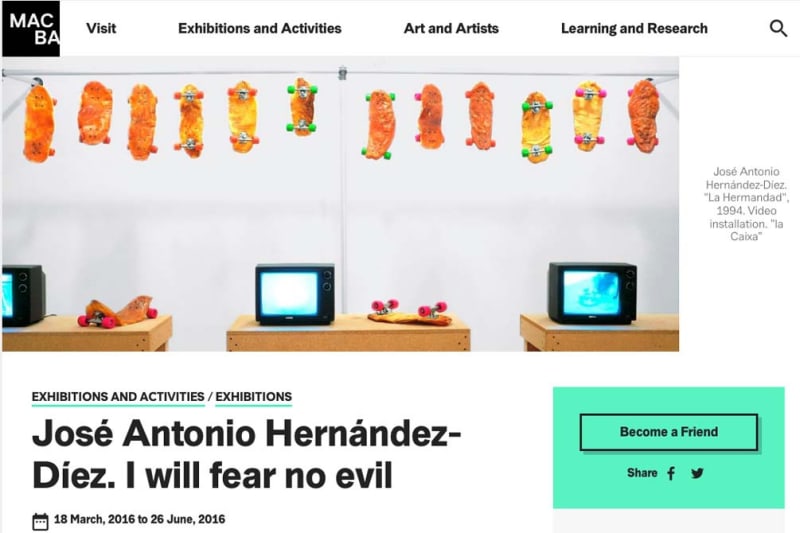José Antonio Hernández-Díez (Caracas, Venezuela, 1964) emerged in the international arena at a time when the idea of contemporary art as a global language was being proposed, and the dominance of artists from Europe and the United States was being questioned. He has participated in a number of important exhibitions including Aperto ’93: Emergency/Emergenzia at the 45th Venice Biennale (1993), Beyond Borders, the 1st Gwangju Biennale (1995) and Cocido y crudo (The Cooked and the Raw) at the Museo Nacional Centro de Arte Reina Sofía, Madrid, 1994. His exhibitions have spanned photography, sculpture, video and drawing; metaphysics besides adolescent humour; high-end production as well as ‘poor’ and unconventional materials.
I will fear no evil presents works from the late eighties and early nineties, some of which have not been seen since they were first exhibited, together with a new project developed specifically for the occasion. This exhibition includes Hernández-Díez’s first experimental videos, along with other early works using screens and vitrines. These include, for example, three pieces that appeared in his landmark first monographic exhibition, San Guinefort y otras devociones (San Guinefort and other devotions), held at the Sala RG in Caracas, July–August 1991. This exhibition heralded what the artist termed as a ‘new Christian iconography’, offering – as artist-colleague Meyer Vaisman described – ‘a techno-pop view of Catholicism’s most beloved symbols’.
The proposition that, in Latin America, the rationalist and scientific force of the Enlightenment did not rupture the progress of the Baroque towards modernity is both given credence and subject to a perpetual referendum in Hernández-Díez’s work. Over the last three decades his syncretic art has grappled with superstition, morality and religion, whilst displaying a fascination with ethics and technology. He has addressed social inequality, violence and unrest as well as cosmetics and consumer goods, and referenced objects from the domestic sphere alongside the public culture of the street or sports field. Hernández-Díez presents an artistic confirmation of the dictum that discontinuity is more likely than continuity. Instead of an intrinsic orthodoxy governing his art, we discover a restless sequence of visual and iconographic inventions, where each work is engineered to articulate specific cultural, personal and historical circumstances. His works negotiate with the making of art as a practice burdened by opacity, veneration and mortality, as much as by its stake in a living and continually reanimated culture.
In addition to the challenge of returning these historical works to life, I will fear no evil presents a new project by Hernández-Díez as a conceptual echo. This new series comprises an iconographic study of light bulb filaments, not only as an addendum to his earlier works’ consideration of electrical revelation and visibility, but, as a provocation to consider what is at stake in the sovereign metaphors of light itself.
Curators: Latitudes (Max Andrews & Mariana Cánepa Luna)

